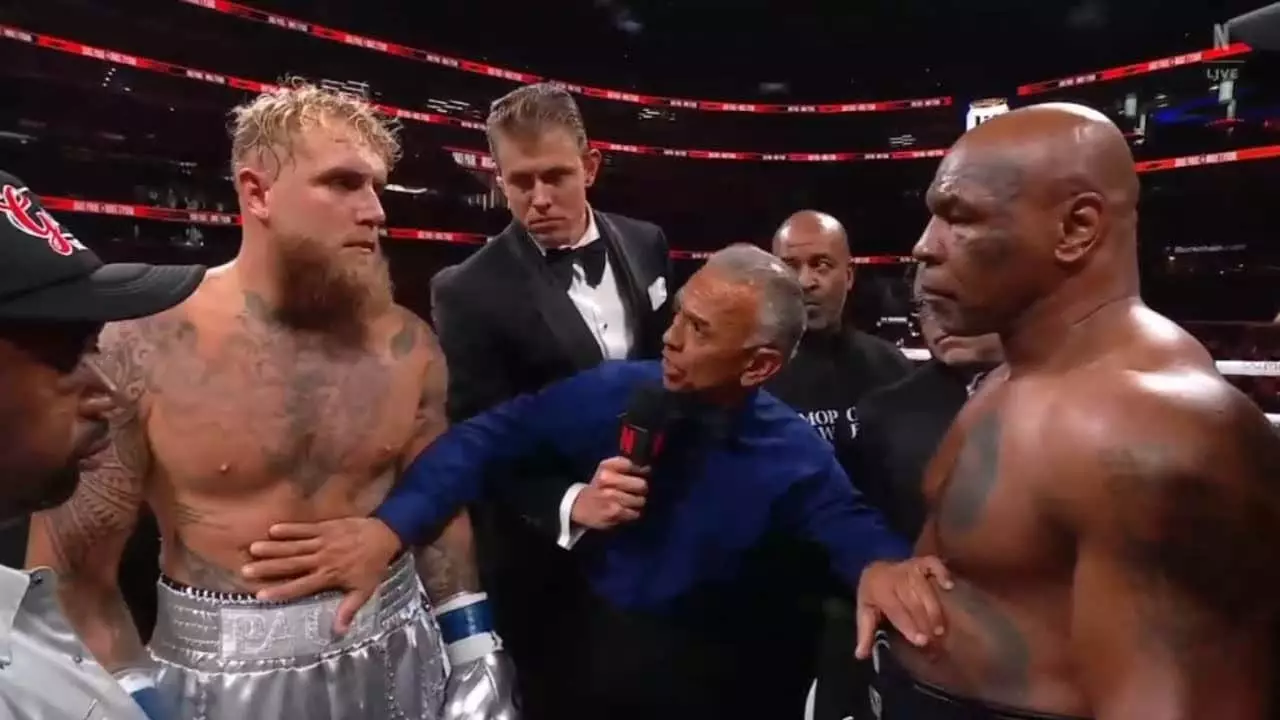Boxing has long been synonymous with iconic personalities, from the groundbreaking Muhammad Ali to contemporary talents like Canelo Alvarez. These legends have not only been warriors in the ring but also cultural titans, able to transcend the sport and tap into broader societal themes. However, as we navigate the complexities of a saturated entertainment environment, the luster of boxing seems muted. The sporadic presence of its top fighters raises concerns about sustained engagement with fans who now have myriad entertainment options.
Fights like Tyson Fury’s spectacle against Francis Ngannou and the intriguing bouts headlined by social media sensation Jake Paul highlight the present state of boxing. Although Fury and Paul may represent different skill sets and credibility levels, they’re both adept at generating events that draw significant interest. Such moments are not enough, however, to guarantee boxing’s long-term vitality. The sport needs a more deliberate strategy that emphasizes regularity and engagement among its top-tier talents to sustain fan interest.
The challenge for boxing extends beyond just MMA rivalries; it finds itself in a fierce competition with other major league sports—think the NFL and NBA—and an endless stream of entertainment from streaming services and social media spectacles. In this age, visibility is critical; a fighter who is out of sight can easily drift into oblivion. Companies such as UFC have thrived by consistently delivering engaging events with credible stars, ensuring their fighters remain in the public consciousness.
In stark contrast, many of boxing’s elite fighters only grace the ring once or twice a year, leading to disengagement among their fanbase. UFC superstars are often featured on numerous fight cards and through engaging promotional content between events. Conversely, boxing’s stars, despite their undeniable talent, frequently miss opportunities to keep their names relevant in the conversation.
Seasonal Stars vs. Year-Round Relevance
When boxing elites do collide in the ring, the results can be spectacular. The recent showdown between Gervonta Davis and Ryan Garcia, which lit up arenas and produced impressive pay-per-view numbers, serves as a case in point. Terence Crawford’s remarkable victory over Errol Spence is another testament to the thrill boxing can offer. These remarkable bouts, however, occur all too infrequently, contributing to a troubling trend of top-tier fighters becoming akin to seasonal attractions rather than consistent contenders.
The challenge intensifies for Canelo Alvarez, boxing’s current marquee name, who while commendably active, struggles to consistently find engaging opponents. The audience craves excitement and competition, and without it, even the most celebrated athletes risk fading from the collective memory.
In discussions about boxing’s future, one cannot overlook the polarizing figure of Jake Paul. Often dismissed as a mere spectacle, his role as a disruptor in the boxing landscape is significant. Paul has managed to draw younger audiences to the sport by promoting himself relentlessly and maintaining an active fight schedule, even if his boxing skills don’t match those of traditional fighters. His success underscores an essential truth: activity and persona matter, not just skill level.
While established fighters like Crawford and Davis display supreme talent, they must also cultivate a relatable persona that resonates with today’s socially-driven fans. A well-crafted engagement strategy via social media and various media forums can work wonders to keep them relevant.
Proposed Solutions: Emphasizing Connectivity and Strategy
For boxing to rediscover its allure, it’s essential for its stars to increase ring activity and engage in thrilling matchups. This means a reduction in safe, non-challenging “tune-up” matches and a preference for dynamic encounters, even when they carry the risk of cross-promotional challenges. The strategy of waiting for optimum financial returns can backfire—a lesson highlighted by the long anticipation surrounding Crawford vs. Spence, which came years later than it should have. Superfights should not be treated as rare, precious gems but as vital components of the sport’s ongoing narrative.
In fostering a greater frequency of fights, not only do the stars gain visibility, but they also create pathways for undercard talents to emerge. Regular events maintain investment from fans and emphasize the sport’s bustling competitive ecosystem.
Boxing is endowed with a rich legacy—outstanding athletes, riveting narratives, and a historical tapestry that appeals to fans. However, success pivots upon its stars rising to meet the demand for consistent involvement. Gervonta Davis, Terence Crawford, and Canelo Alvarez must transcend mere athletic prowess to become cultural phenomena that actively engage the public. In an era teeming with choices, their fights need to resonate not just within the ring but deeply within the sports community at large.
By prioritizing increased activity, strategic match-making, and smart promotional strategies, boxing can not only fortify its presence amidst stiff competition—it can flourish, reclaiming its rightful place in the hearts of sports enthusiasts everywhere.

